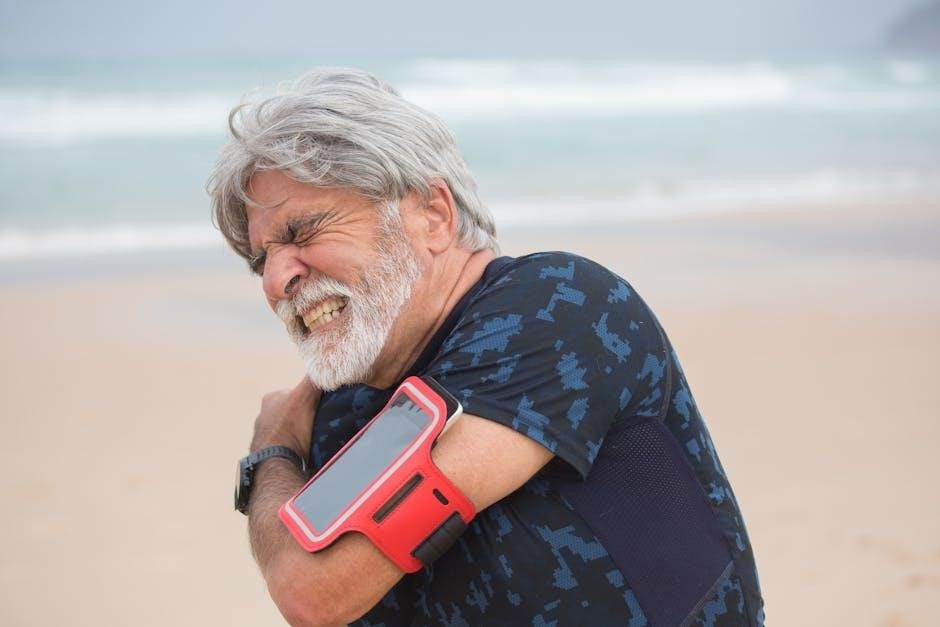Sports injuries are common among athletes and fitness enthusiasts‚ often disrupting training and performance. Understanding the anatomy of injuries is crucial for effective prevention‚ diagnosis‚ and recovery. By focusing on the anatomical structures involved‚ individuals can implement targeted rehabilitation strategies to restore function and safely return to activity.
1.1. Overview of Sports Injuries
Sports injuries encompass a wide range of physical damages that occur during athletic activities. The anatomy of these injuries provides a detailed guide to understanding their nature‚ prevention‚ and treatment. By illustrating the affected muscles‚ tendons‚ and ligaments‚ it helps identify the root cause of pain and dysfunction. This knowledge is essential for developing targeted rehabilitation programs and preventing future complications‚ ensuring a safer return to sports and fitness activities.
1.2. Importance of Anatomy in Injury Rehabilitation
Anatomy plays a vital role in injury rehabilitation by providing a clear understanding of the affected structures. Knowing how muscles‚ tendons‚ and ligaments function and interact allows for precise diagnosis and treatment. This knowledge enables the creation of customized exercise programs‚ enhancing recovery and reducing reinjury risks. Anatomy-based rehabilitation strategies ensure a focused approach‚ promoting faster healing and restoring optimal movement and performance for athletes and fitness enthusiasts alike.
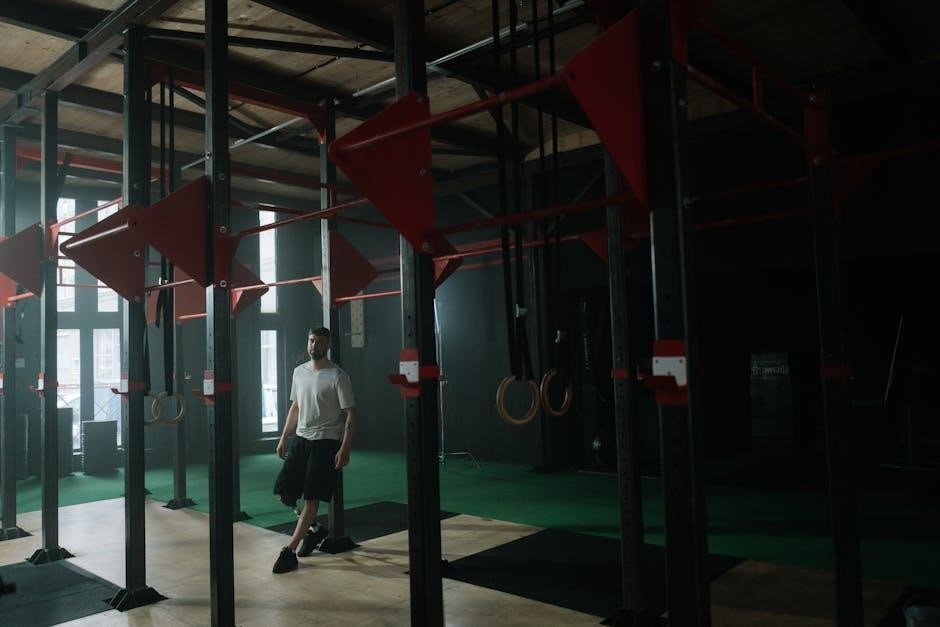
Classification of Sports Injuries
Sports injuries are classified into acute and chronic categories‚ with further distinctions between traumatic and overuse injuries. This classification aids in tailored treatment and management strategies.
2.1. Acute vs. Chronic Injuries
Acute injuries occur suddenly‚ often due to direct trauma or overloading‚ while chronic injuries develop gradually from repetitive stress or overuse. Understanding this distinction is crucial for effective treatment. Acute injuries typically involve immediate pain and swelling‚ requiring rest and immobilization. Chronic injuries‚ such as tendinitis or stress fractures‚ result from prolonged strain‚ necessitating long-term management strategies like rehabilitation exercises and lifestyle adjustments to prevent further damage and promote healing.
2.2. Traumatic vs. Overuse Injuries
Traumatic injuries result from sudden‚ forceful events like falls or collisions‚ causing immediate damage to tissues. Overuse injuries‚ however‚ develop gradually due to repetitive stress or poor technique. Traumatic injuries often involve fractures‚ sprains‚ or tears‚ requiring immediate medical attention. Overuse injuries‚ such as shin splints or tendinitis‚ stem from prolonged strain‚ necessitating rest‚ rehabilitation‚ and adjustments in training routines to prevent recurrence and promote healing.

Detailed Anatomy of the Human Body
The human body consists of intricate systems‚ including the muscular‚ skeletal‚ and nervous systems‚ all working together to enable movement and maintain stability. Understanding this anatomy is essential for identifying injury causes and developing effective rehabilitation strategies.
3.1. Muscular System and Its Role in Movement
The muscular system‚ comprising skeletal‚ smooth‚ and cardiac muscles‚ is vital for movement‚ stability‚ and posture. Skeletal muscles‚ attached to bones via tendons‚ enable voluntary movement through contraction and relaxation. In sports‚ muscle strains and tears are common injuries‚ often due to overuse or trauma. Understanding muscle anatomy aids in diagnosing injuries and designing rehabilitation exercises. Strengthening and stretching routines target specific muscle groups to restore function and prevent future injuries‚ emphasizing the importance of muscle balance in overall performance.
3.2. Connective Tissues: Tendons and Ligaments
Connective tissues‚ such as tendons and ligaments‚ play a critical role in movement and stability. Tendons connect muscles to bones‚ enabling contraction and movement‚ while ligaments stabilize joints by connecting bones. Injuries to these tissues‚ like strains or tears‚ are common in sports‚ often due to overuse or trauma. Understanding their anatomy is essential for rehabilitation‚ as proper healing ensures restored function and prevents recurring damage‚ maintaining joint integrity and overall mobility.
3.3. Joint Structure and Function
Joints are complex structures where bones connect‚ enabling movement and stability. Comprising cartilage‚ ligaments‚ and synovial fluid‚ joints facilitate flexibility while absorbing stress. Their function is crucial for locomotion and load-bearing activities. Common injuries‚ such as ACL tears or osteoarthritis‚ highlight the importance of joint health in maintaining mobility and preventing long-term damage‚ emphasizing the need for targeted rehabilitation strategies to restore joint function and overall athletic performance.
3.4. Nervous System’s Impact on Motor Function
The nervous system plays a vital role in motor function by transmitting signals that control muscle contractions and coordination. Nerve impulses regulate movement precision and reflex responses‚ essential for athletic performance. Injuries affecting the nervous system‚ such as nerve damage‚ can impair motor function‚ leading to reduced strength‚ coordination‚ and balance. Rehabilitation strategies often focus on restoring neural pathways and enhancing motor control to ensure optimal recovery and return to physical activity.
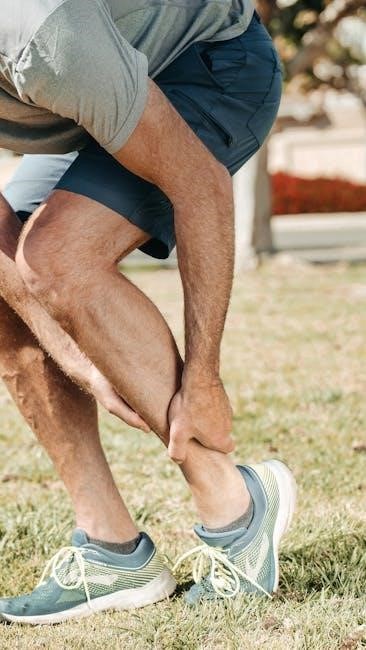
Common Sports Injuries by Body Region
Sports injuries often occur in specific body regions‚ with the lower extremities‚ shoulders‚ and spine being prone to overuse and traumatic injuries. Understanding regional vulnerabilities aids in targeted prevention and rehabilitation strategies.
4.1. Lower Extremities: Knee and Ankle Injuries
Knee and ankle injuries are among the most common in sports‚ often resulting from sudden stops‚ twists‚ or high-impact landings. The knee‚ supported by ligaments like the ACL and menisci‚ is prone to tears and sprains. Ankle injuries frequently involve ligament sprains due to rolls or twists; Understanding the anatomy of these joints is key to implementing effective rehabilitation exercises‚ such as strengthening the surrounding muscles and improving flexibility to prevent reinjury and restore function.
4.2. Upper Body: Shoulder and Elbow Injuries
Shoulder and elbow injuries are prevalent in sports involving overhead movements or repetitive throwing. The shoulder‚ a complex joint with muscles and ligaments‚ is susceptible to dislocations and rotator cuff strains. Elbow injuries often stem from overuse‚ leading to conditions like tennis elbow. Anatomical understanding aids in targeted rehabilitation‚ focusing on strengthening shoulder stabilizers and improving flexibility to prevent recurrence and restore optimal upper body function for athletes and fitness enthusiasts alike.
4.3. Core and Spinal Injuries
Core and spinal injuries often result from poor posture‚ improper lifting‚ or repetitive strain. The spine‚ supported by muscles and ligaments‚ is vulnerable to herniated discs and strains. Core injuries‚ including abdominal muscle strains‚ can impair stability and movement. Rehabilitation focuses on strengthening abdominal and back muscles‚ improving flexibility‚ and enhancing posture to restore spinal stability and prevent future injuries‚ crucial for maintaining athletic performance and overall physical function.
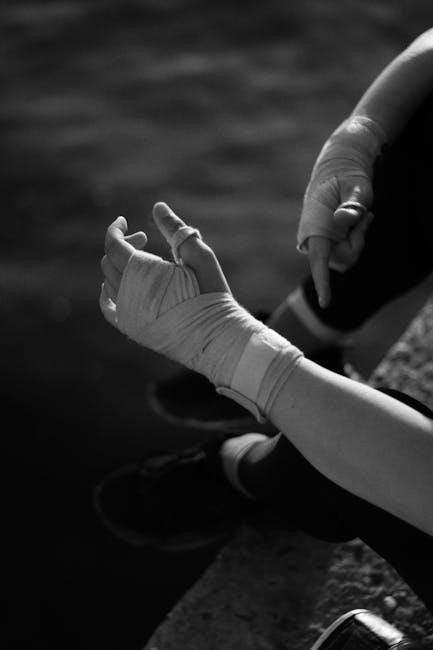
Injury Prevention Strategies
Injury prevention strategies emphasize anatomical awareness‚ proper techniques‚ and targeted exercises to strengthen muscles and improve flexibility‚ utilizing appropriate equipment to reduce sports-related injuries effectively.
5.1. Warm-Up and Cool-Down Routines
A proper warm-up enhances flexibility‚ activates muscles‚ and prepares the body for physical activity‚ reducing injury risk. Dynamic stretches and light cardio are essential. Cooling down aids in gradual recovery‚ improving flexibility and minimizing muscle soreness. Both routines should be sport-specific‚ focusing on the anatomical regions most engaged. Consistent practice of these rituals is vital for long-term injury prevention and optimal performance. They complement rehabilitation efforts by maintaining muscle balance and joint health.
5.2. Strengthening and Flexibility Exercises
Strengthening exercises target specific muscle groups‚ enhancing stability and resilience. Flexibility exercises improve range of motion and reduce stiffness. Together‚ they address anatomical imbalances‚ preventing overuse injuries. Resistance training‚ like weights or bands‚ builds muscle endurance‚ while stretching enhances joint mobility. These exercises are tailored to the athlete’s sport‚ focusing on areas prone to injury. Regular practice promotes recovery‚ supports rehabilitation‚ and ensures optimal physical performance‚ making them integral to injury prevention strategies.
5.3. Proper Equipment and Technique
Using proper equipment and maintaining correct technique are vital for injury prevention. Appropriate gear reduces injury risk by providing necessary support and protection. Correct movement patterns optimize performance and minimize strain on anatomical structures. Poor technique can lead to overuse injuries‚ while well-fitted equipment ensures proper alignment and reduces stress on joints and muscles. Together‚ they help maintain anatomical integrity‚ preventing imbalances and enhancing overall training effectiveness.
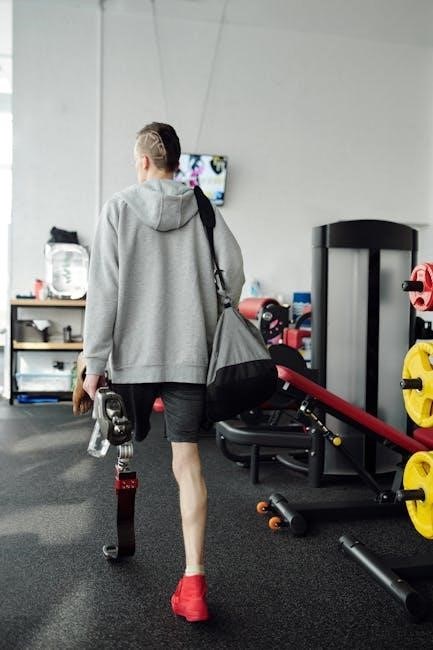
Diagnostic Techniques for Sports Injuries
Accurate diagnosis is key to effective treatment. Techniques include physical exams‚ patient history analysis‚ and imaging like X-rays‚ MRIs‚ and ultrasounds to assess injury severity and guide rehabilitation.
6.1. Physical Examination and Patient History
A thorough physical examination and detailed patient history are essential for diagnosing sports injuries. The exam involves inspecting swelling‚ bruising‚ or deformities‚ and assessing range of motion‚ strength‚ and pain points. Palpation helps identify tender areas or structural damage. The patient’s history reveals injury mechanisms‚ prior injuries‚ and medical conditions‚ aiding in accurate diagnosis and personalized rehabilitation plans. This step guides further diagnostic testing and treatment strategies‚ ensuring effective recovery outcomes.
6.2. Imaging Technologies: X-rays‚ MRIs‚ and Ultrasounds
Imaging technologies play a vital role in diagnosing sports injuries. X-rays detect bone fractures and alignment issues‚ while MRIs provide detailed views of soft tissues like muscles‚ tendons‚ and ligaments. Ultrasounds are useful for evaluating joint and tendon injuries in real-time. These tools help identify the extent of damage‚ guide treatment decisions‚ and monitor recovery progress. Combining these methods ensures a comprehensive understanding of the injury‚ aiding in precise rehabilitation planning and optimal outcomes.
Rehabilitation Strategies
Effective rehabilitation combines the RICE protocol‚ physical therapy‚ and supportive devices to promote healing‚ restore function‚ and prevent future injuries‚ ensuring a safe return to activity.
7.1. RICE Method: Rest‚ Ice‚ Compression‚ Elevation
The RICE method is a cornerstone of acute injury management. Rest prevents further damage‚ while ice reduces swelling and pain. Compression supports injured tissues‚ and elevation minimizes fluid retention. This approach‚ often combined with physical therapy‚ promotes faster healing and strengthens the affected area‚ reducing the risk of future injuries. It’s a simple yet effective strategy for initial injury care‚ emphasizing recovery and return to activity.
7.2. Physical Therapy and Exercise Programs
Physical therapy plays a vital role in rehabilitation by restoring strength‚ flexibility‚ and mobility. Tailored exercise programs address specific injuries‚ enhancing recovery and preventing re-injury. Therapists use a combination of stretching‚ strengthening‚ and functional exercises to improve joint stability and muscle balance. These programs are designed to gradually increase intensity‚ ensuring a safe return to sports or fitness activities while minimizing the risk of future injuries through proper movement patterns and conditioning.
7.3. Use of Braces and Supportive Devices
Braces and supportive devices are essential for providing stability and protection during the rehabilitation process. They help immobilize injured areas‚ reducing strain and promoting proper healing. Common devices include knee braces‚ ankle supports‚ and wrist splints‚ which are tailored to specific injuries. These tools‚ when used alongside exercise programs‚ enhance recovery by preventing further damage and offering confidence to patients as they gradually return to physical activity and sports.
7.4. Pharmacological Interventions
Pharmacological interventions‚ such as nonsteroidal anti-inflammatory drugs (NSAIDs)‚ are often used to manage pain and inflammation during rehabilitation. These medications can help reduce swelling and discomfort‚ enabling patients to participate more effectively in physical therapy. However‚ their use must be carefully monitored to avoid side effects and ensure they complement‚ rather than hinder‚ the overall recovery process. Professional guidance is essential for safe and effective use.
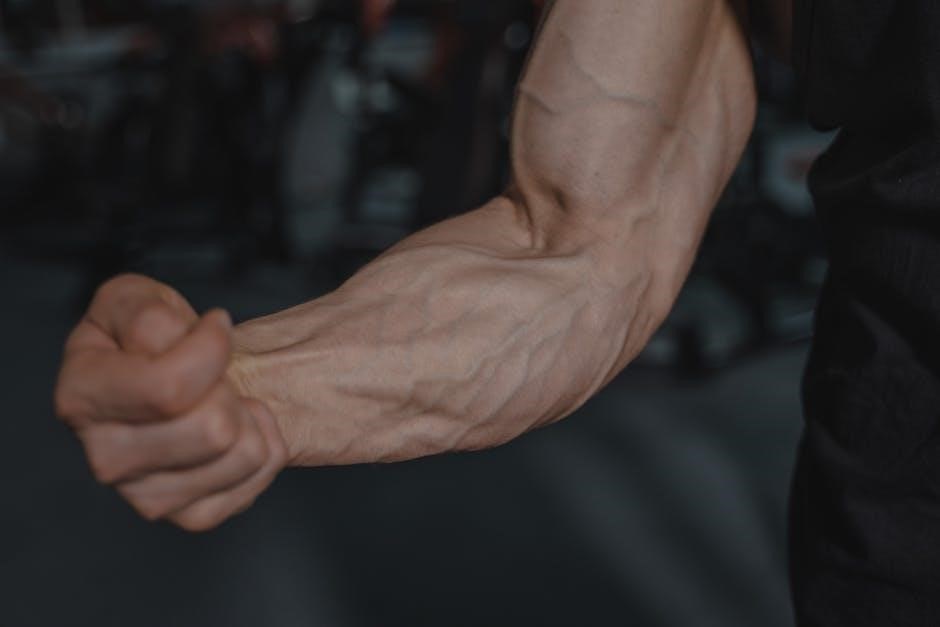
Emerging Trends in Sports Injury Rehabilitation
Emerging trends include advancements in biotechnology‚ AI-driven monitoring‚ and integrative mind-body techniques‚ offering innovative approaches to enhance recovery and improve rehabilitation outcomes for athletes and fitness enthusiasts.
8.1. Advances in Biotechnology and Tissue Engineering
Biotechnology and tissue engineering are revolutionizing sports injury rehabilitation by offering innovative solutions. Stem cell therapies‚ growth factors‚ and bioactive scaffolds promote tissue repair and regeneration. Advances in 3D printing enable customized implants and prosthetics‚ enhancing recovery outcomes. These technologies address complex injuries‚ such as tendon and ligament tears‚ by fostering natural healing processes. They also reduce recovery time‚ improving overall rehabilitation efficiency for athletes and fitness enthusiasts.
8.2. Role of AI and Wearable Technology
AI and wearable technology are transforming sports injury rehabilitation by providing real-time monitoring and personalized insights. Wearable devices track physical metrics‚ enabling early detection of potential injuries. AI algorithms analyze data to optimize rehabilitation programs‚ ensuring tailored exercises and progress tracking. These technologies enhance recovery efficiency‚ reduce reinjury risks‚ and empower athletes to take an active role in their rehabilitation journey‚ fostering safer and more effective return to sports activities.
8.3. Integrative Approaches: Mind-Body Techniques
Mind-body techniques‚ such as meditation‚ yoga‚ and breathing exercises‚ are increasingly used in sports injury rehabilitation. These practices enhance mental focus‚ reduce stress‚ and improve overall well-being‚ complementing physical recovery. By addressing both psychological and physiological aspects‚ integrative approaches promote a holistic healing process‚ empowering athletes to manage pain and regain functionality effectively. Such methods are particularly beneficial for long-term recovery and maintaining mental resilience during rehabilitation.
